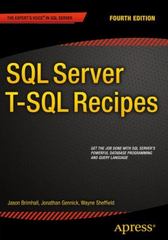Question
Q2. One of the criticisms of TCP New Reno (the version we studied in class) is that the rates assigned to connections are dependent on
Q2.
One of the criticisms of TCP New Reno (the version we studied in class) is that the rates assigned to connections are dependent on the round trip times of the connections. Consider two connections with rates R1 bits/sec and R2 bits/sec, respectively, that share a bottleneck link of capacity C bits/sec. These connections are not competing for bandwidth with any other connections along their entire paths. Suppose that the connection with rate R2 has a round trip time that is 4 times as large as the connection with rate R1.
a) Consider a scenario where both connections start transmitting at rate C/4 bits/sec and increase their rate according to TCP New Renos congestion avoidance mechanism. Suppose that both connections experience a triple duplicate ACK loss event as soon as the combined rate exceeds C (immediately) and then halve their sending rates. Sketch a graph depicting the (ideal) evolution of the rates R1 (x-axis) and R2 (y-axis) over multiple such loss events. [4 marks]
b) Using your figure from the previous part, or by considering the steady state behaviour, derive the equation for the line segment in your graph that the rates converge towards. [4 marks]
c) Based on your analysis, what is the fairness of the steady state to which the connections converge? To be more precise, does one connection achieve a higher average rate than the other? What are these average rates and what is the ratio between them? [3 marks]
d) Your colleague suggests that you could design a new protocol where the TCP congestion avoidance increase does not depend on RTT. The proposed idea is that you select a reference round trip time RT T0 and that during the congestion avoidance phase, each connection increases its congestion window by RT Ti/RT T0 MSS instead of by 1 MSS. (MSS stands for Maximum Segment Size and we assume that all connections have the same MSS). With this approach, connections with a longer RTT increase their rates faster. Would this lead to a fair solution? Explain your answer. [3 marks]
e) In practice, there would be competing traffic, and a connection would need to estimate its RTT. Propose a method it could use to do this. [2 marks] f) Consider a scenario where there is heavy congestion, so that the queueing delay leads to a connection estimating a much higher RTT than when the path is uncongested. What would be the impact of your modified TCP congestion avoidance protocol? Is this a problem?
Step by Step Solution
There are 3 Steps involved in it
Step: 1

Get Instant Access to Expert-Tailored Solutions
See step-by-step solutions with expert insights and AI powered tools for academic success
Step: 2

Step: 3

Ace Your Homework with AI
Get the answers you need in no time with our AI-driven, step-by-step assistance
Get Started


